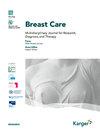风险调整的癌症筛查和预防(RiskAP):基于风险因素的学习筛查对早期疾病检测的补充筛查
IF 2
4区 医学
Q2 OBSTETRICS & GYNECOLOGY
引用次数: 5
摘要
背景:风险调整后的癌症筛查和预防是改善癌症预防的一个有前途且不断出现的选择。这是由于对风险因素的了解不断增加,以及为个人风险预测确定风险因素的能力不断增强。然而,风险增加的证据与基于风险增加的临床预防干预措施的有效性和效率的证据之间存在知识差距。遗传风险因素诊断的广泛应用尤其加剧了这一差距,因为一旦发现风险增加,就立即出现适当预防措施的问题。然而,收集有效预防措施的证据,最好是通过前瞻性随机预防研究,通常需要很长时间,而对风险增加的了解会立即产生很高的行动需求。总结:因此,我们提出了一个风险调整预防概念,该概念基于现有最佳证据,提供所需和适当的预防措施,并通过结果评估不断评估,并根据这些结果不断改进。我们进一步讨论了与实施这一概念相关的结构和程序要求以及法律和社会经济方面。本文章由计算机程序翻译,如有差异,请以英文原文为准。
Risk-Adjusted Cancer Screening and Prevention (RiskAP): Complementing Screening for Early Disease Detection by a Learning Screening Based on Risk Factors
Background: Risk-adjusted cancer screening and prevention is a promising and continuously emerging option for improving cancer prevention. It is driven by increasing knowledge of risk factors and the ability to determine them for individual risk prediction. However, there is a knowledge gap between evidence of increased risk and evidence of the effectiveness and efficiency of clinical preventive interventions based on increased risk. This gap is, in particular, aggravated by the extensive availability of genetic risk factor diagnostics, since the question of appropriate preventive measures immediately arises when an increased risk is identified. However, collecting proof of effective preventive measures, ideally by prospective randomized preventive studies, typically requires very long periods of time, while the knowledge about an increased risk immediately creates a high demand for action. Summary: Therefore, we propose a risk-adjusted prevention concept that is based on the best current evidence making needed and appropriate preventive measures available, and which is constantly evaluated through outcome evaluation, and continuously improved based on these results. We further discuss the structural and procedural requirements as well as legal and socioeconomical aspects relevant for the implementation of this concept.
求助全文
通过发布文献求助,成功后即可免费获取论文全文。
去求助
来源期刊

Breast Care
医学-妇产科学
CiteScore
4.40
自引率
4.80%
发文量
45
审稿时长
6-12 weeks
期刊介绍:
''Breast Care'' is a peer-reviewed scientific journal that covers all aspects of breast biology. Due to its interdisciplinary perspective, it encompasses articles on basic research, prevention, diagnosis, and treatment of malignant diseases of the breast. In addition to presenting current developments in clinical research, the scope of clinical practice is broadened by including articles on relevant legal, financial and economic issues.
 求助内容:
求助内容: 应助结果提醒方式:
应助结果提醒方式:


